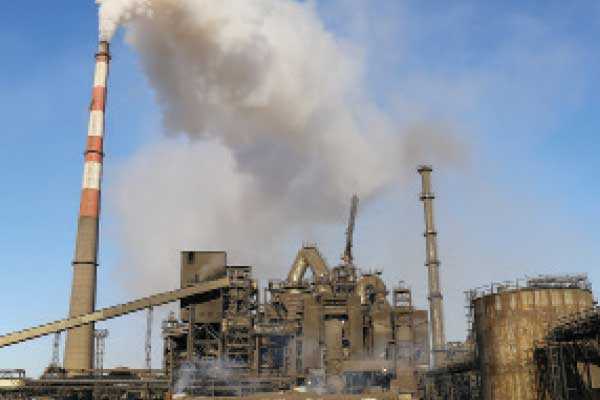Let go BCL stake
The sole reason of operating a business is to get sustained profits, nothing else. This does not matter if government or a private investor owns the business. I am compelled to reiterate this statement because of the current tightrope that government is currently walking through in a desperate attempt to save BCL copper mine.
Looking from a distance, it will appear the executive arm of government is having limited options. However, some four hundreds of kilometers, north of the capital city, more than 4500 workers trek to BCL copper mine in Selibe-Phikwe to make a fortune for the company and a meal for their families. However, in recent months, workers and indeed management have become increasingly jittery and restless. The fear? They might just wake up and discover the government had closed the mine, for good! For sometime now, BCL has dominated high-leveled closed-door meetings at the government enclave. The agenda items centred on how the copper mine should operate sustainably and profitably.
Two weeks ago, a local business weekly made chilling death knell to miners with its article titled ‘Finished and Klaar’. In the article, the paper said cabinet has taken a decision to close the mine as it is not sustainable to run. The determination on whether to shut down the mine or not remains a very challenging decision to make by cabinet. However, what is key is what government should do with a profitable future BCL. The mine is currently operating at a loss and it has a mountain of debts to descend from. However, the mine is currently not producing anything to generate revenue, let alone pay its numerous creditors. It will seem BCL top executives these days spend more time discussing how they could sweeten their funding proposals for impactful responses.
However, what is becoming clearer by the day is that the same government is running impatient that BCL has now become more of a burden, competing with other equally important national projects, with its piling financial proposals on the back rock of drying state coffers.
It’s a precarious situation for President Ian Khama’s government, which is expected to post a P6 billion deficit in its current budget (2016-17). The choice to close the mine will not be helpful for now, as government has to first recover the invested billions of Pula. Government has also made guarantees to BCL mine, including the recent $100 million from Barclays bank. Any solution must ensure the mine returns to profitability in the medium term. This of course, is if the global commodity crunch was to end and prices for copper warrant sustained mining.
While government’s top officials are still in deep thoughts about how to deal with BCL, the critical matter that should be lingering on their heads is how to deal with the mine’s shareholding structure. It is a decision that could have been made some years ago, but unfortunately it was not to be. Currently, government is the sole shareholder at BCL. This has become increasingly knotty, as whatever demand BCL makes government has to bear it alone. In the modern business world, this kind of business model is eroding fast. It is even problematic for Botswana government, which surprisingly but forthrightly speaking, seems not to truly understand the art of mining.
I strongly believe that to solve this menace, once and for all, government should just sell part of BCL once the mine is profitable. The share sale will prove vital during unprofitable and unsustainable periods. If government had partnered with other investors shareholders at BCL, it could have acted as fallback and even more importantly, as a measure to spread risk in the highly volatile mining business. De Beers and Botswana have had a largely successful partnership with their Debswana.
For example, when Jwaneng was facing possible closure in the foreseeable future, the two shareholders quickly jumped in and invested P24 billion in a project known as Cut 8. The project is expected to prolong the life of the mine by at least a decade or so. When the Russian company, Norilsk sold its minority stake at BCL some few years ago leaving government as the sole shareholder, an expression of interest should have been opened immediately to invite strategic investors on board. At the current time, BCL’s aging equipment and mining underground become expensive; the deeper the mine, the more expensive and risky to run it.
Recent loss of lives at the mine can attest to this. The Vice President Mokgweetsi Masisi admitted, as Bloomberg recently reported from Kigali, that the mine is costing them dearly. “It's unprofitable, unsustainable and expensive,” he said this on the sidelines of the African Union elective meetings two weeks ago. Further, the republic’s number two said they will continue to inject P1, 4 billion on the mine to keep it afloat every year, even when the company was to stop mining.
This perhaps shed some light on the imminent closure of the mine. To save taxpayers from further paying more for BCL problems alone, government should at the earliest possible time part sell the mine. This will not be for the first time that a government does this. In Russia, Vladimir Putin’s government has sold part of its stake at Alrosa to plug its budget deficit. For now, government is likely to come with a workable solution to keep the mine running. However, to avoid falling into the same pit year in and year out, government should sell part of its shareholding at the Selibe Phikwe mine. The money raised would be thrown in the economic diversification efforts.





